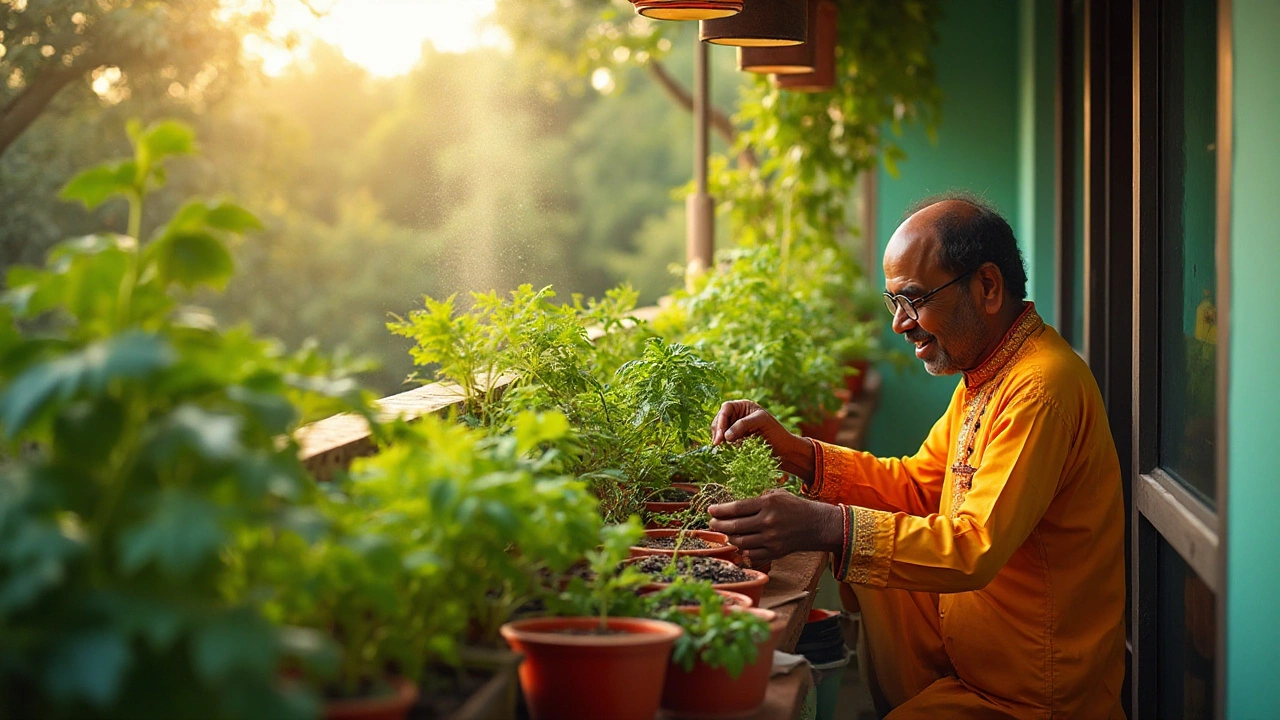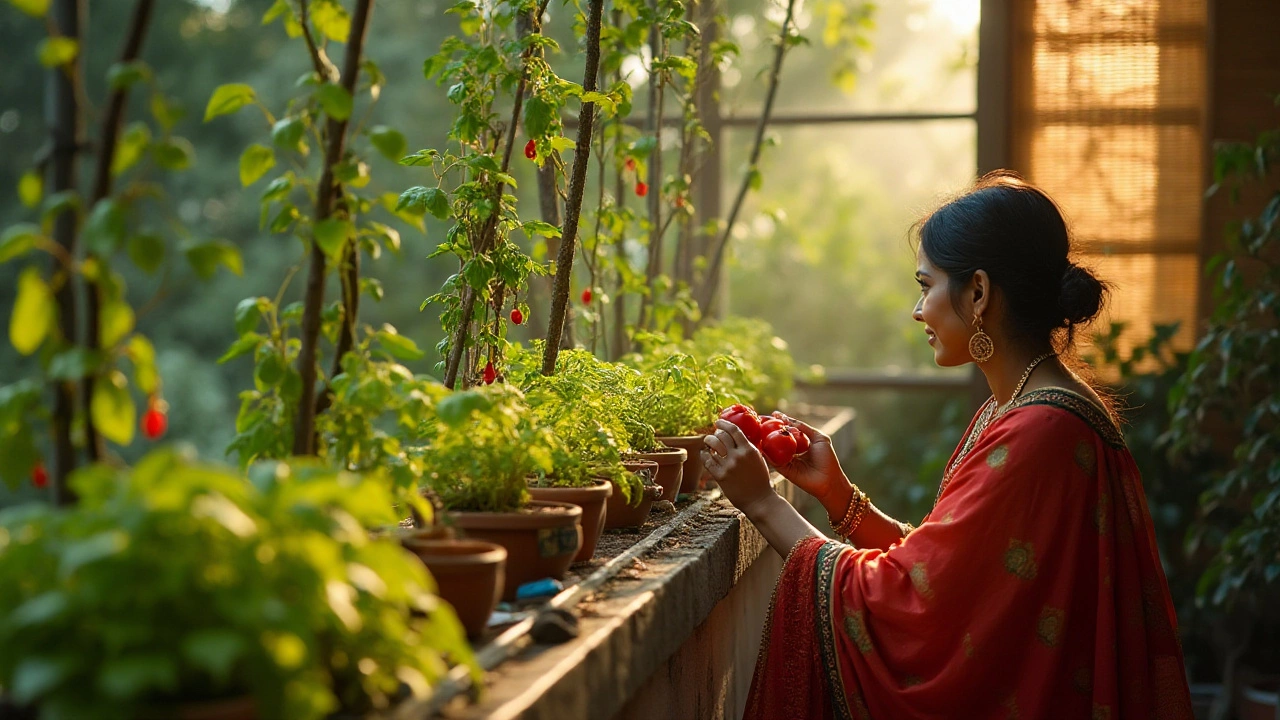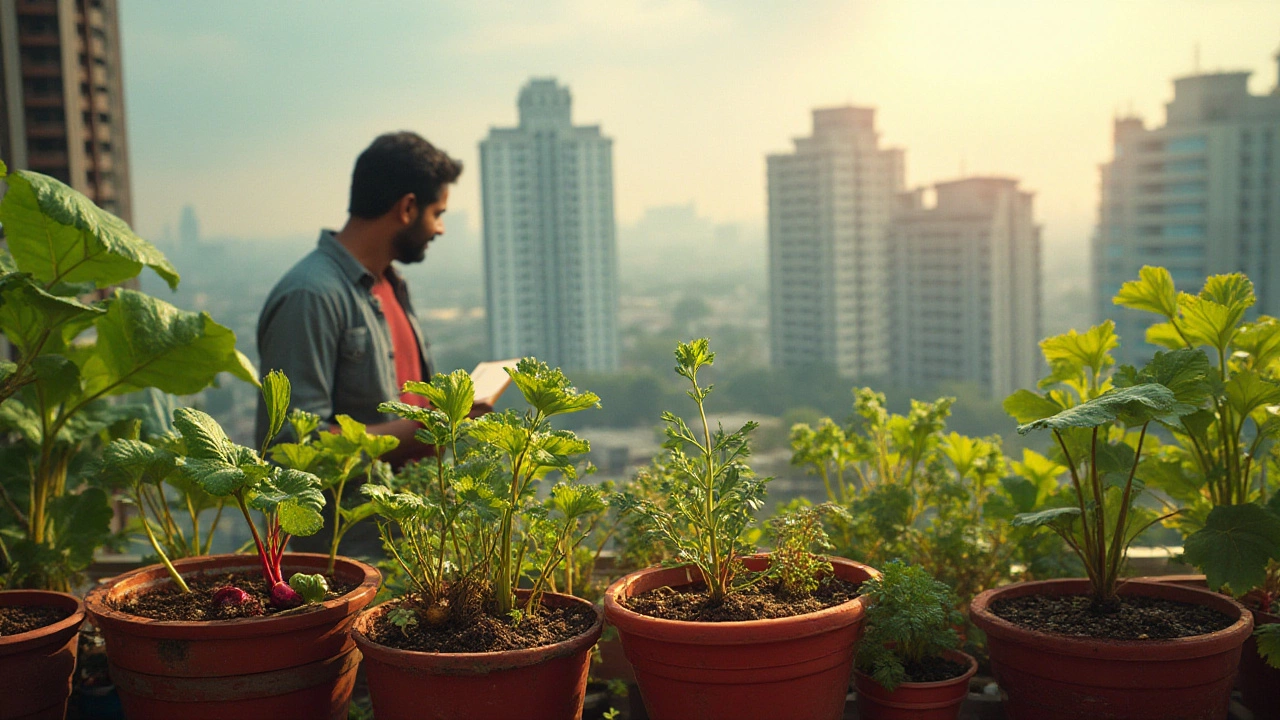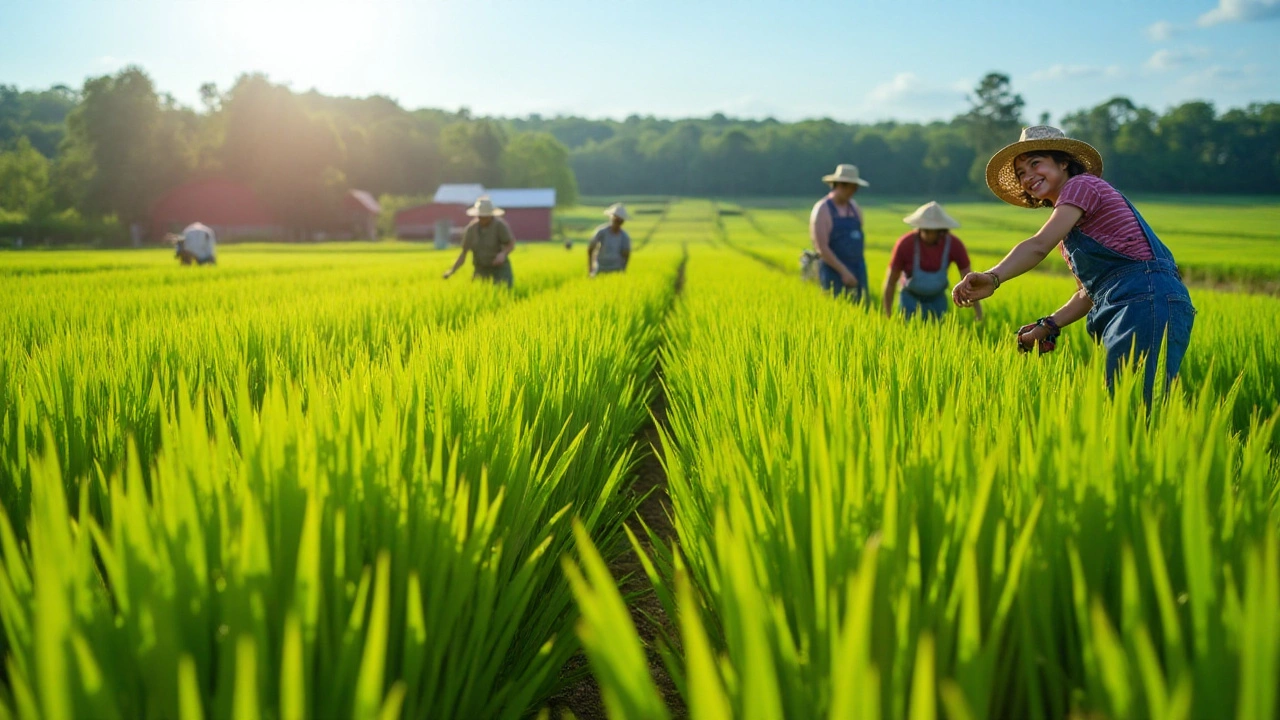Balcony Gardening: Growing the Slowest Vegetables

Gardening enthusiasts often find immeasurable joy in watching seeds sprout and grow into flourishing plants. However, for those practicing balcony gardening, space constraints demand creativity and planning, especially when it comes to growing vegetables.
Some vegetables, although rewarding, are on the slow side of the growth spectrum and require a bit more patience. While that might sound discouraging to some, the process of nurturing these plants from seed to harvest can be immensely satisfying.
In this exploration of slow-growing vegetables suitable for balcony gardens, we'll delve into the intricacies of their growth patterns, identify which ones demand more time, and share tips to make your gardening journey enjoyable. Whether you're an urban dweller with a green thumb or a novice eager to grow your food, unlocking the secrets behind these patient blooms will undoubtedly enrich your experience.
- Understanding Vegetable Growth Cycles
- Top Slow-Growing Vegetables for Your Balcony
- Tips for Cultivating Patience and Perseverance
- Maximizing Space and Sunlight in Balcony Gardens
Understanding Vegetable Growth Cycles
When venturing into the world of balcony gardening, understanding the growth cycles of vegetables is not just helpful; it's essential. Each vegetable has its own rhythm and pace, shaped by nature's intricate designs. Growth cycles encompass the span between planting and harvest, and these timelines can be influenced by myriad factors such as species, environment, available nutrients, and of course, the gardener's green thumb. It’s important to look beyond the seed packet and delve into the specifics of what it demands in terms of sunlight, water, and temperature range.
The first phase is called the germination stage, where seeds sprout roots and shoots. This might take mere days or several weeks, depending on the vegetable in question. Take carrots, for instance—a staple in many balcony gardens. Known for a relatively long germination time, they can make a gardener question their patience. But trust the process, because once the magic starts, there's no turning back. After germination, we enter the seedling stage. Here, tiny sprouts begin their transformation into recognizable plants. The requirements become more demanding as they need a balance of nutrients and light to thrive, especially in the microclimate of a small balcony.
Caring Through the Growth Seasons
As plants transition from seedlings to mature plants, it's crucial to adapt your care routine to meet their evolving needs. The growing season itself can vary greatly. For many vegetables, spring and summer are prime times, but some thrive in cooler or even winter months. A well-defined understanding of these natural cycles can play a pivotal role in successful urban gardening. For example, Brussels sprouts require up to six months to reach harvest and flourish during the cooler spells. Creating a schedule for watering and feeding is as important as selecting the right seeds. Consistent care directly influences the cycle's rhythm, and knowing when to prune or control pest infestations will safeguard months of effort.
"The greatest fine art of the future will be the making of a comfortable living from a small piece of land," said Abraham Lincoln. This holds true even if that piece of land is merely a sunlit city balcony.
By keeping a close eye on how your plants react to their environment, such as exposure to city winds or the urban heat island effect, you gain insights that pave the way for improved gardening practices. Recording progress in a gardening journal is highly recommended. It allows you to look back on what worked and what didn't, and helps in planning more effectively for subsequent seasons. Also, sharing notes with other balcony gardeners can provide unexpected yet pleasant surprises in terms of both knowledge and bounty.
Recognizing and Responding to Growth Patterns
Just as every individual has different learning curves, vegetables have distinct growth patterns. Identifying these patterns early on can significantly influence your success in balcony gardening. Some plants exhibit rapid spurts followed by quiet phases, while others maintain a steady development. Understanding these signals can help in providing better care tailored to each type. For example, slow-growing vegetables like onions, which can take up to eight months, often require more patience but repay with abundant flavor that enhances countless dishes.
Spending time studying your plants, observing the nuances of their growth patterns, and making adjustments accordingly is what transforms a habit into a passion. Once the commitment is made, the knowledge gained creates a symbiotic relationship between the gardener and the plants, leading to a flourishing garden and a content gardener. Armed with a profound understanding of these growth cycles, even the most urban of gardeners can transform their balconies into lush, verdant oases.

Top Slow-Growing Vegetables for Your Balcony
Creating a thriving vegetable garden on a balcony can be a truly rewarding endeavor, especially when you're aware of the unique challenges and opportunities that come with limited space. Certain vegetables, while delicious and nutritious, tend to take their time in reaching the harvest stage, and these can be a great choice for gardeners who appreciate patience and sustained effort. One such vegetable is the artichoke. Known for its distinctive flavor and culinary versatility, the artichoke requires a bit of time to reach maturity, often taking up to 180 days from seed to harvest. Artichokes need ample sunlight, so ensuring your balcony receives enough light is crucial. Container size matters, too; a larger pot allows for the deep root systems these plants develop.
A classic in the list of slow-growing veggies is asparagus. Asparagus may take a whopping three years to reach full production potential, but the wait is worth it. This vegetable grows in spears, and while the initial growth can be rapid, allowing the plant to fully develop underground is essential. It’s important to be patient with asparagus, as allowing it to mature naturally can lead to a bounty that lasts for over a decade with proper care. Balcony gardens can benefit from this long game, turning an initial investment of time into years of delightful harvests.
Leeks are another ticker on the slow side. They take approximately 120 to 150 days to reach harvesting size. Their mild onion flavor enhances soups and stews, making them a worthwhile addition to your urban garden. Leeks need consistent watering without waterlogging the soil, and a mulch layer can help maintain the right moisture level. The allure of leeks is not only in their taste but also in their resilience to colder weather, which can extend their growing season even on a balcony.
"Gardening is the art that uses flowers and plants as paint, and the soil and sky as canvas." — Elizabeth MurrayThen there's onions, which require anywhere from 100 to over 175 days to mature, depending on the variety. Onions develop best in a well-drained, fertile soil, with regular watering. Thinning seedlings is an important step to ensure each plant has enough space to grow robustly. Despite the slower harvest timeline, onions store well, meaning the effort put into growing them can extend the benefits for months.
Urban gardening enthusiasts might also consider carrots, a popular choice for small space gardening due to their vertical growth. That said, their deep roots require deep containers, and they take around 70 to 80 days to grow. With their vibrant colors and sweet flavor, carrots not only add nutrition to your meals but also visual appeal to your balcony gardening project. Ensure your containers have deep, loose soil for the unimpeded growth of the roots, which is critical for achieving straight, lengthy carrots.
Including these slow-growing vegetables in your balcony setup may demand a bit more patience, but the rewards are tangible. The key is in the preparation and understanding of each plant's particular needs, from sunlight exposure to watering frequencies. These vegetables offer not just sustenance, but also an enriching experience that embodies the slow beauty of nature right at your doorstep.

Tips for Cultivating Patience and Perseverance
Patience is a virtue often tested in the world of balcony gardening, especially when nurturing slow-growing vegetables. It’s easy to get discouraged when visible progress seems miles away, but embracing the journey as much as the destination can significantly enrich the experience. Start by recognizing that nature operates on its own timeline, and the rhythm of seasons plays a crucial role in the growth cycle. Understand that these cycles can't be rushed; forcing growth can lead to disappointment and potentially harm your plants. Appreciating each phase, from germination to a budding plant, can foster a deeper connection with your garden.
Engage with your plants daily to cultivate patience and perseverance. By observing subtle changes, maintaining a journal becomes an insightful activity. Documenting your progress creates a tangible record that reinforces your commitment and growth, both of the plants and yourself as a gardener. Within those notes, include details about weather conditions, watering schedules, and any challenges faced. Such dedicated record-keeping can be a reliable compass on your gardening journey, illuminating paths for adjustment and improvement.
At times, reaching out to community groups or online forums can provide needed encouragement and shared wisdom. Many gardeners face similar trials and tribulations, and a supportive community offers tips, testimonials, and successful strategies. You’re not alone in this endeavor, and learning from others' experiences can turn discouraging scenarios into promising opportunities. As author Alice Walker once said,
"The most common way people give up their power is by thinking they don’t have any."Remembering this can keep your spirits high.
For those who find visual representation beneficial, tracking growth using photographs can be a powerful tool. Before and after comparisons over weeks, or months showcase how much has been achieved despite seeming stagnation. Coupled with journaling, it provides a multi-faceted perspective on progress, reinforcing dedication and tenacity. Such activities root you firmly in the present, a gentle reminder that like the vegetable garden, you are growing in unseen but significant ways.
Small Steps, Big Impact
Break the journey into smaller, manageable tasks to avoid feeling overwhelmed. Consider labeling each step with encouraging notes that highlight why each task is essential to the plant's success. Include tasks such as soil aeration, checking for pests, or gentle pruning. Each activity, however small, plays a pivotal role in the plant's development. By focusing on these incremental improvements, patience and perseverance aren't viewed as colossal obstacles but a series of achievable tasks.
And finally, mindfulness and meditation can serve as intangible allies. Taking a moment amidst gardening chores to sit and breathe with nature can reenergize your spirit. Sometimes, connecting with the broader garden landscape allows perspective shifts, easing impatience. Witnessing the graceful passage of time as clouds drift or shadows change positions instills a serenity mirrored in the growth of your plants. This inner calm translates into actions within your urban gardening space, cultivating both plant life and gardener resilience.

Maximizing Space and Sunlight in Balcony Gardens
For many urban gardeners, the thought of transforming a limited balcony into a thriving oasis might seem challenging, yet it is here that creativity truly shines. The constraints of a small area should not deter you from implementing an efficient and flourishing balcony gardening setup. The key lies in making the best use of the space you have while ensuring your plants receive maximum exposure to sunlight. Strategic planning and innovative design can enable you to cultivate a rich variety of plants, even in the smallest of spaces.
Start by evaluating the amount and direction of sunlight your balcony receives throughout the day. South-facing balconies tend to get abundant direct sunlight, making them ideal for sun-loving vegetables like tomatoes and peppers. On the other hand, east or west-facing balconies might receive optimal morning or afternoon sun, suitable for greens like lettuce and spinach. Once you understand your balconys light patterns, it's possible to align your vegetable choices accordingly, ensuring each plant gets its required dose of sunlight.
In small spaces, vertical gardening can be a gardener's best friend. Using shelves, hanging pots, or trellis systems, you can layer plants at different heights. This method not only maximizes the growing area but also ensures that each plant has access to light. Consider utilizing wall-mounted planters or stackable pots to hang from rails, which can create additional space for your slow-growing vegetables. When arranging these containers, remember to keep taller plants like beans or peas towards the back so they dont overshadow shorter ones.
According to the National Gardening Association, "Vertical gardening can increase growing yield per square foot while also minimizing the required maintenance.”
Container choice also plays a crucial role in maximizing your balcony gardening efforts. Opt for lighter, easily movable pots that can be adjusted to follow the sun's trajectory. Self-watering pots can be highly beneficial, ensuring that your plants receive consistent hydration while reducing your daily maintenance time and effort. Pay close attention to the soil composition, utilizing a well-draining potting mix to keep plant roots healthy and prevent waterlogging—a common issue in small container environments.
Finally, don't forget the use of mirrors and reflective surfaces. These can serve to redirect sunlight to shadowed areas of your balcony, ensuring no plant goes without its essential light requirements. While most get carried away planting as many vegetables as possible, remember that quality trumps quantity in a confined space. Selective planting allows each vegetable to thrive without competition for critical resources. Whether you're new to the world of urban gardening or simply refining your green space routine, these strategies are sure to unlock the overflowing potential of your balcony garden.





